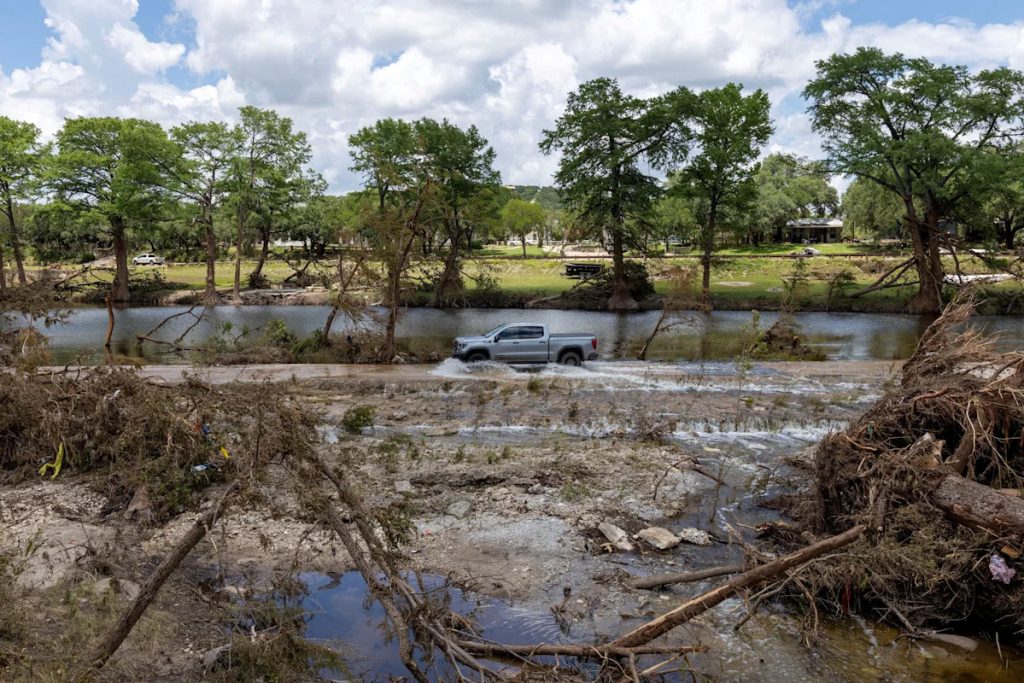Unfounded Conspiracy Theories Surround Recent Devastating Floods, Blaming Cloud Seeding
The United States has been grappling with a series of severe flooding events in recent weeks, impacting regions from Texas to New Mexico and North Carolina. These catastrophic floods have claimed lives, displaced communities, and caused widespread destruction. Tragically, the disaster’s aftermath has been further complicated by the spread of misinformation and conspiracy theories, with social media platforms becoming breeding grounds for baseless claims. One prominent theory falsely attributes the floods to cloud seeding, a weather modification technique that experts confirm is unrelated to the recent storms.
The conspiracy theories, fueled by social media posts and even promoted by a congressional candidate, have gained traction despite a lack of scientific evidence. Kandiss Taylor, running for Georgia’s District 1 seat in the U.S. House, publicly blamed “fake weather,” “cloud seeding,” “geoengineering,” and “manipulation” for the floods, particularly the devastating floods in Texas that claimed at least 120 lives and left over 170 missing. These claims, however, contradict scientific explanations for the flooding.
Meteorologists and climate experts definitively state that the widespread flooding resulted from a confluence of atmospheric conditions, most notably the presence of moisture from two tropical systems. Tropical Storm Barry, which recently made landfall on Mexico’s Yucatán Peninsula, and another system stalled over the Gulf of Mexico injected substantial tropical moisture into the southern U.S. This moisture surge directly fueled the catastrophic floods in Texas Hill Country, where the Guadalupe River experienced a dramatic 30-foot rise in under an hour.
The cloud seeding conspiracy theory highlights the dangers of misinformation in times of crisis. Cloud seeding, a technique developed in the 1940s, aims to enhance rainfall or snowfall in drought-prone regions. The process involves introducing small quantities of silver iodide into existing clouds. This chemical acts as a “cloud condensation nucleus,” encouraging the formation of larger water droplets or ice crystals, which then fall as precipitation due to gravity.
Crucially, cloud seeding is not employed in storms with the potential for severe weather, including tornadoes or flash floods. Furthermore, its impact is localized and short-lived. Once a seeded cloud releases its moisture, it does not continue to produce rain. The scale and intensity of the recent floods far exceed the capacity of cloud seeding, further discrediting the conspiracy theories.
Regulations governing cloud seeding exist at both federal and state levels. While a cloud seeding project occurred in Pleasanton, Texas, on July 2nd, experts emphasize that it was aimed at alleviating persistent drought conditions and was unrelated to the subsequent severe weather. This project, conducted approximately 150 miles southeast of Kerr County, aimed for modest rainfall enhancement, not the torrential downpours that caused widespread flooding.
The spread of misinformation, particularly through social media, underscores the importance of critical thinking and reliance on credible sources. While cloud seeding, like other forms of weather modification, raises legitimate ethical and moral questions regarding human intervention in natural systems, it is essential to separate scientifically grounded discussions from unfounded conspiracy theories. The recent floods tragically demonstrate the devastating consequences of extreme weather events, and attributing them to unsubstantiated claims only hinders effective disaster response and recovery. It is imperative to focus on scientifically accurate explanations and solutions to address the challenges posed by increasingly frequent and intense weather events related to climate change.


